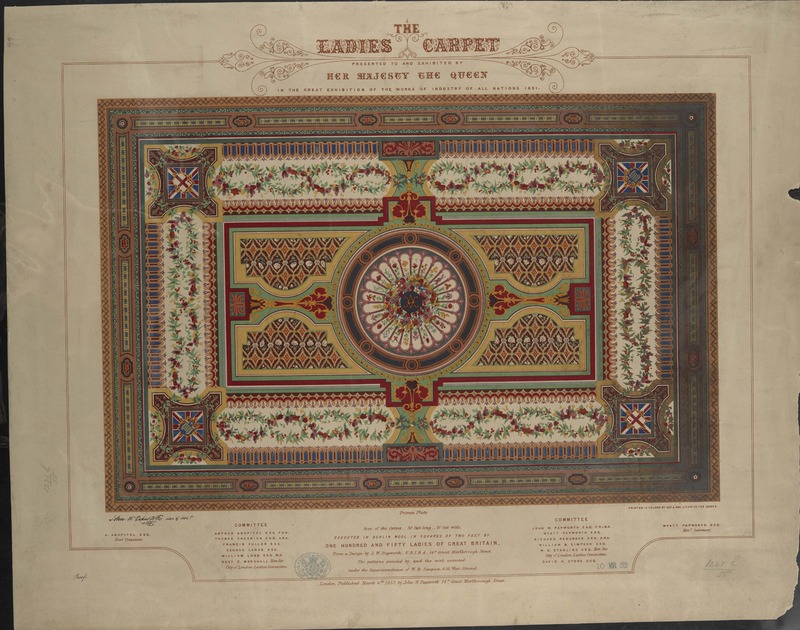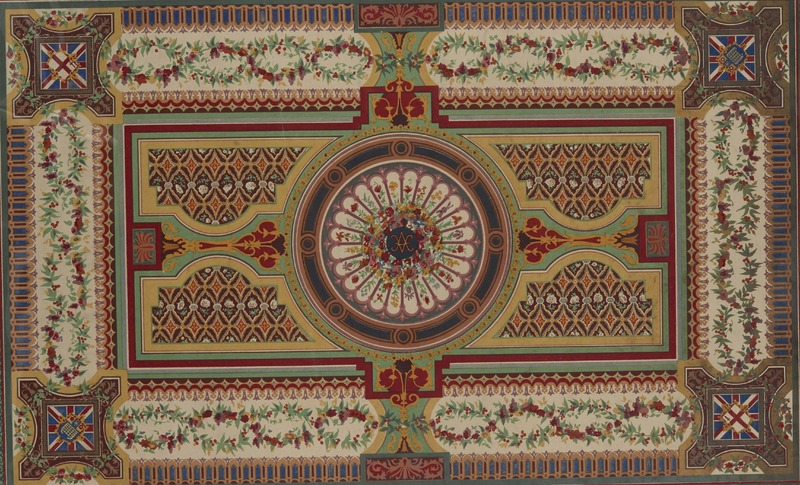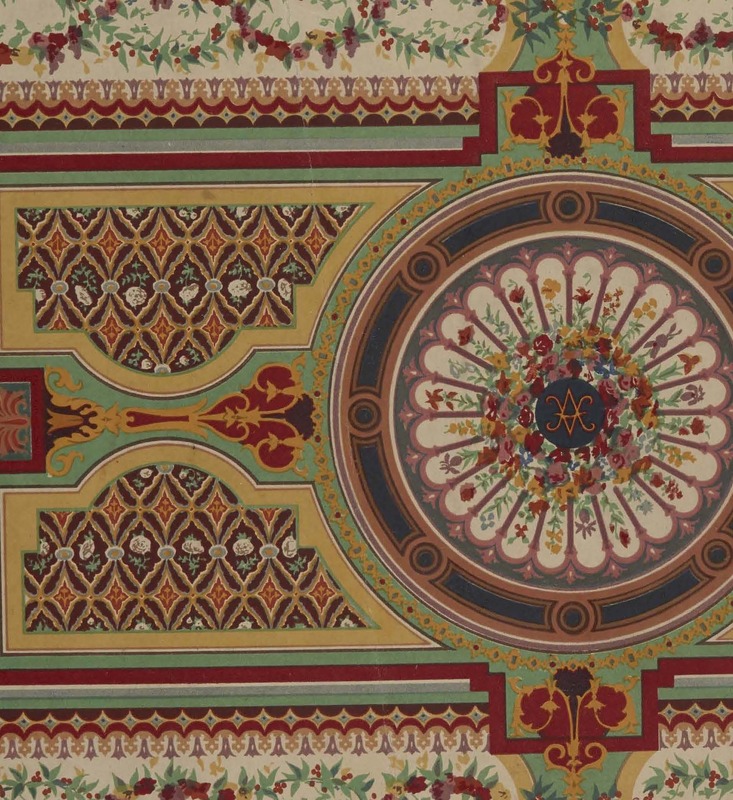The "Ladies Carpet"
Item
-
Title
-
The "Ladies Carpet"
-
Description
-
The “Ladies Carpet,” designed by English architect J.W. Papworth and displayed at the Great Exhibition in 1851, is an example of Berlin wool work. The carpet measured thirty by twenty feet and consisted of one hundred and fifty squares, each measuring two feet by two feet. The squares were made and pieced together by “one hundred and fifty ladies of Great Britain,” as proclaimed under the published design of the carpet. Red and green accents dominate the intricate design, with red roses and green vines surrounding an inner rectangle. Small union jacks appear on all four corners of the carpet; two of the union jacks feature crests at their centres, while the other two feature the cross of Saint George. In the middle of the carpet, a V and an A interlock each other, paying homage to Queen Victoria and Prince Albert. The carpet’s current location is unknown.
-
MORNA O'NEILL ON WHAT THIS OBJECT TEACHES US:
The “Ladies Carpet” highlights the intersection between art and industry during the nineteenth century, raising questions about the gendering of artistic practices and overlaps between home and factory.
Dr. O’Neill explains that the carpet is part of a Ruskinian art project. In his lecture on “The Relation of Art to Morals” (1870), John Ruskin remarked that “life without industry is guilt and industry without art is brutality.” To Ruskin and many other Victorians, art was essential to industry. The “Ladies Carpet” demonstrates the relation between art and industry during the early to mid-nineteenth century through its medium, Berlin wool work. Needlework was usually free form or pattern transferred, but with the development of Berlin wool work, geometric regularity was introduced to the practice of needleworking. Through its use of a grid, Berlin wool work showcased needlework’s relation to industrial techniques that relied on rote consistencies and mimicked burgeoning industrial models. The grid allowed one worker to add to a sequence of operations executed by others. A picture or design would be divided into a grid and transferred onto coarse canvas. Patterns were prepared by men, and colour instructions were prepared by women on point paper. Carpets were popular projects for Berlin wool work because the coarse canvas and thick wool meant that an expensive piece of home furnishing could be made quickly out of durable material.
The image shown here of the “Ladies Carpet'' is the only known reproduction of the design created by J.W. Papworth. Still-life painter George Lance oversaw the creation of the “Ladies Carpet” after the design was shown at the Society of Arts in 1850. Papworth prepared the design at the suggestion of W.B. Simpson, a design and decorative supplier. According to Simpson, the execution of Papworth’s design would allow the skilled needleworking women of Great Britain to prove themselves superior to the looms of the continent. However, at the Great Exhibition, the handmade carpet appeared in the same category as machine-made lace, labelled as “industrial work,” demonstrating how the transition from handicraft to manufactured object resulted in a number of uneven compromises. Nevertheless, Queen Victoria gave her stamp, or, as Dr. O’Neill suggests, her “stomp” of approval, when she stood on the carpet to open the Great Exhibition, as memorialized in Henry Courtney Selous’s painting.





